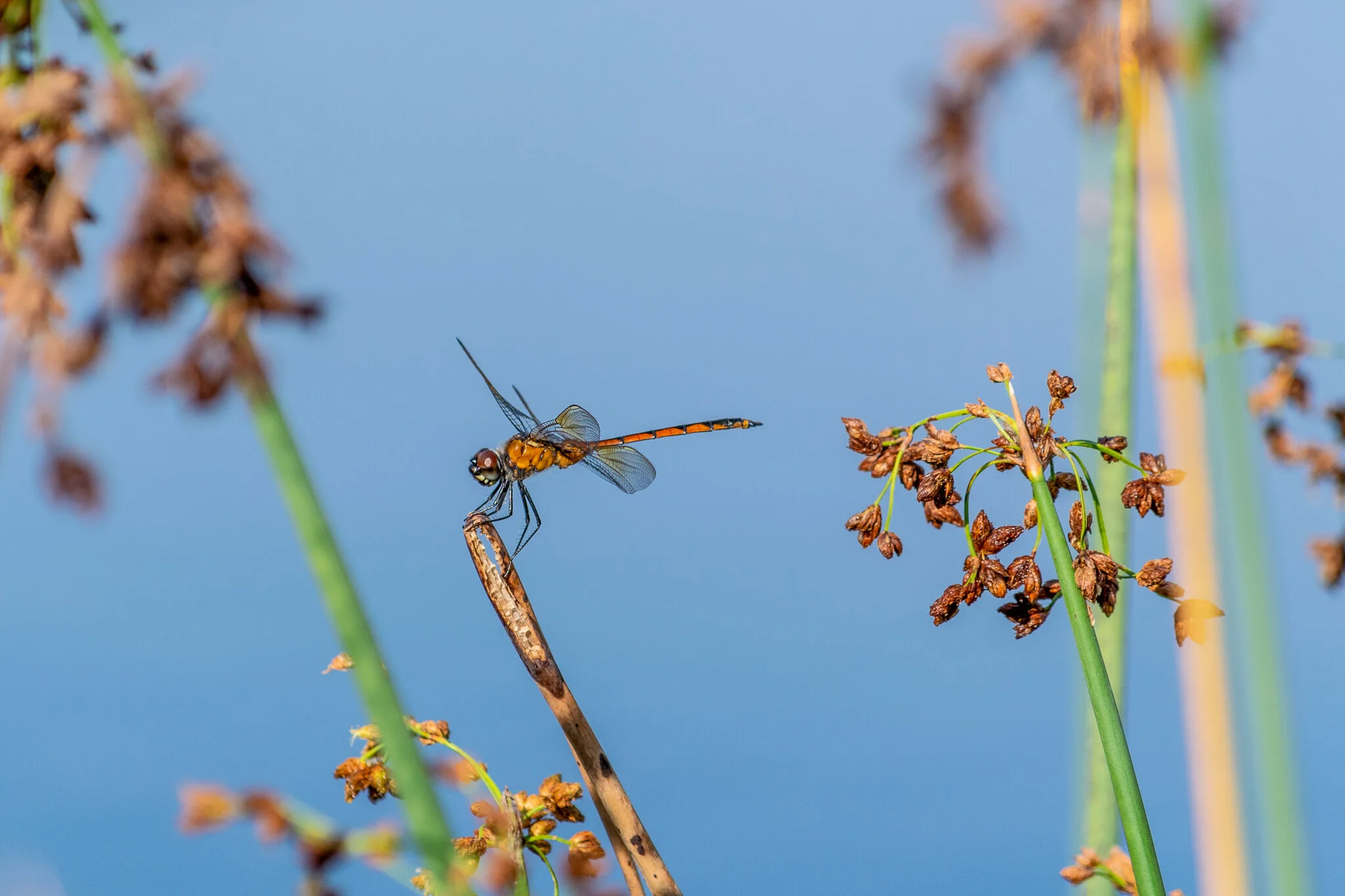DPW About Dragonflies
A Signature Bug That Signifies Healthy Ponds
Dragonfly Pond Works is the Johnny Appleseed of bugdom, lavishing clients’ ponds with dragonfly larvae. It’s their signature inset because it inhabits only flourishing environments.
As dragonflies grow, they consume increasing amounts of their favortie meal- mosquito larvae. A single dragonfly can eat several dozen to several hundred mosquitoes every day.
Dragonflies are superbly adapted for mosquito control. Flying three and a half times faster than their bug prey, dragonflies are so precise as to capture nearly every mosquito they chase. They actually catch their prey by grabbing it with their feet. A Harvard University study (“Dragonflies: They Flying Aces of the Insect World,” Science Nation, October 3, 2011) found that dragonflies were so efficient in their hunting that they caught 90 to 95 percent of the prey released into a test enclosure.
Dragonflies are expert fliers. They can zoom straight up or down, hover like a helicopter and even mate mid-air. If they can’t fly, they’ll starve because they only eat prey they catch while flying.
Dragonflies appetite for mosquitoes makes them an integral part of any sensible wetlands beautification strategy. As a key indicator of aquatic health, wetland refuges populated by dragonflies will be more highly valued not just by property owners, but by the community at large.
A healthy pond is a sanctuary and a natural asset that increases a property’s beauty and worth.
Smithsonian Magazine notes in an article from October 5, 2011 that “there’s something magical about dragonflies.” The article pointed out that dragonflies were some of the first winged insects to evolve, some 300 million years ago. Today’s dragonflies have wingspans of two to five inches, but, incredibly, fossil dragonflies have been found with wingspans of up to two feet in length.
Dragonflies are unappreciated members of the natural world. They do amazing things, and are so beneficial to us. Think about this: A dragonfly called the glove skimmer set the record for the longest migration of any insect on the planet- 11,000 miles back and forth across the Indian Ocean.
What insect could be more amazing than a dragonfly?

